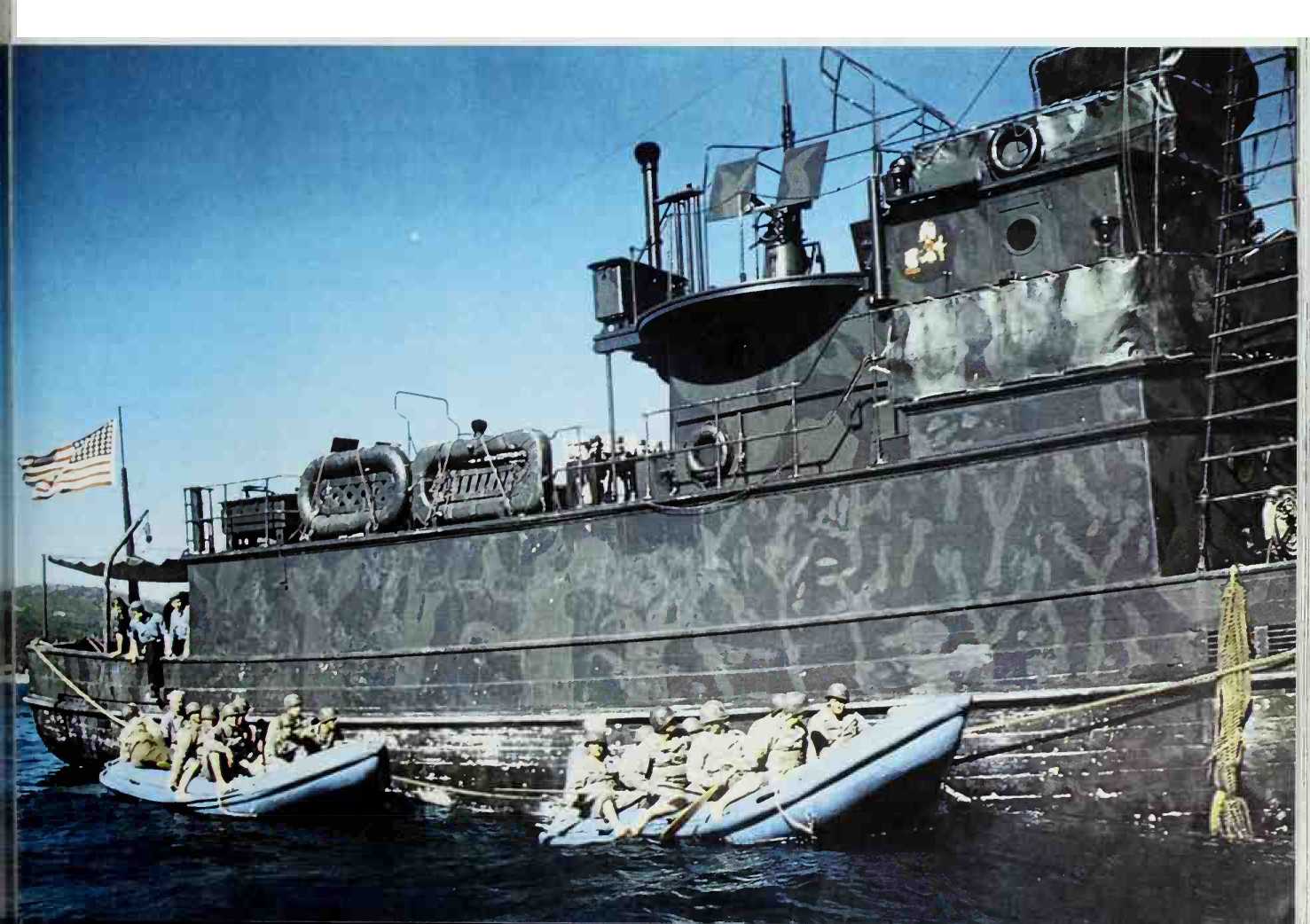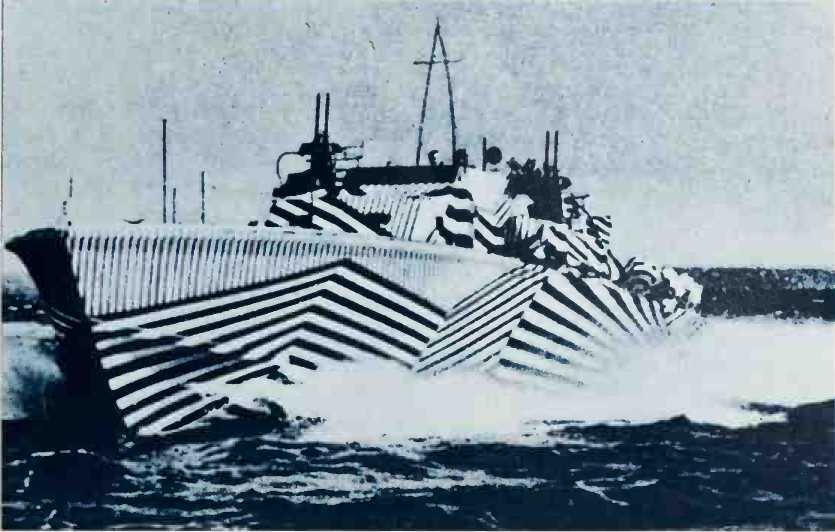These material achievements of the U. S. Navy, remarkable though they were, would have been of little avail if they had not been accompanied by a similar build-up in the quality and the quantity of the men who were to benefit from them.
On the day after Pearl Harbor the American Navy had 337,274 officers, petty officers, and other ranks. Twelve months later there were more than a million (1,112,218 to be exact); this figure had increased by nearly 930,000 by the end of December 1943, and had reached about three million on the same date in the following year. This enormous recruiting and training effort required some 947 Instruction Centres which in June
1944 were being attended each day by
303.000 men of all ranks and specialities. According to Admiral King in the
Report quoted above, the number of men on active service on the day the Japanese began their aggression was only a tenth of those available. In particular there had to be intensive training of nearly
300.000 officers, 131,000 of whom came straight from civilian life. "Nothing succeeds like success,” says an old adage. In the event the methods used by the Navy in selection, basic instruction, specialised training, posting, and promotion for all these men were close to perfection and gave the United States fleets well-manned ships which incurred only a minimum of accidents at sea.
The crews must on the whole have been like those described by J. Fahey, who has left us a fascinating diary of the Pacific campaign, through which he served on hoard the light cruiser Montpelier between February 1943 and August
1945 from Guadalcanal to the Ryukyu Islands. The daily entries made by this young sailor show him to be patriotic, a
V Assault teams transfer to inflatable landing-craft from their landing ship.


A American P. T. boat in dazzle camouflage. It was in command of one of these craft that the young J. F. Kennedy made his name, saving his crew after shipwreck during the Solomons campaign.
Keen fighter, a skilled and conscientious gunner, cheerfully accepting chores, a good companion and one singularly well aware of the sense and the implications of the actions in which his ship was engaged. Furthermore, Leading Seaman Fahey’s snap judgements on Admirals "Tip” Merrill, "Thirty-one knots” Burke, "Bull” Halsey and Mitscher, the "terrific guy” have all been borne out by history. Others have maintained that the Americans overcame their adversaries in Europe and Asia by sheer weight of materiel. This is to a large extent true, but the fact remains that this materiel was handled by well-trained, well-disciplined personnel.




 World History
World History









